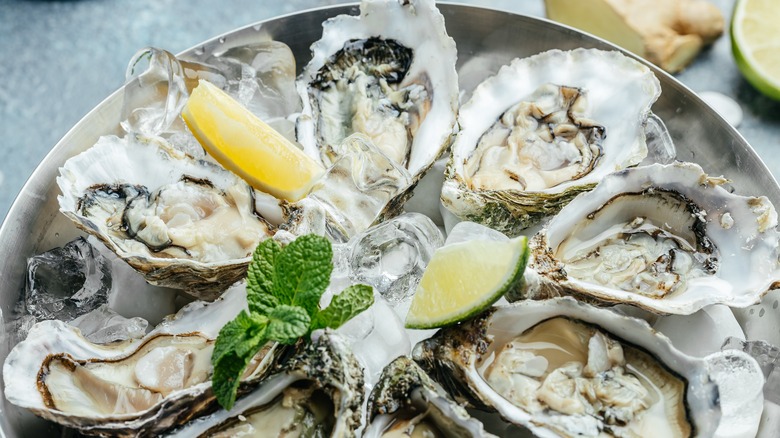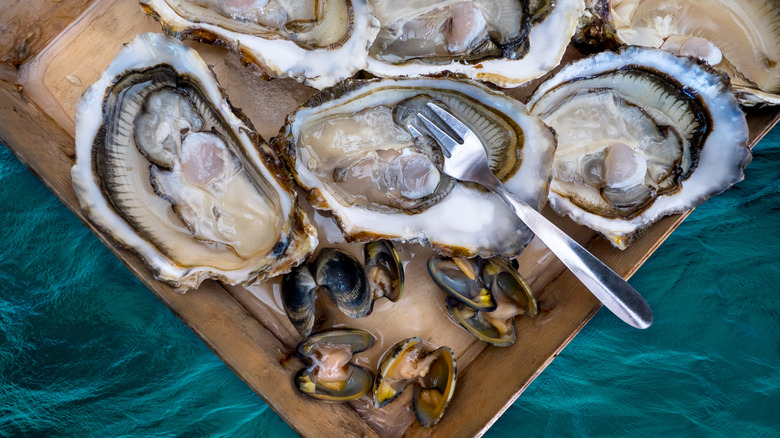The Oyster Fine Dining Restaurant Tip That's So Easy To Break
If you've ever found yourself feeling woefully underprepared for a fine dining experience, you're not alone. The ingredients are fancy and expensive, there's way too much silverware on the table, and it's riddled with unspoken rules that scream exclusive membership. You can find yourself in a panic if you're caught in an unfamiliar situation while wearing your best clothes. Oysters are one such food with panic-inducing potential.
Oysters can be cooked in various ways: raw, steamed, baked, stewed, or fried. The diversity of options and restaurant cutlery might make it easy to overlook one of the biggest faux pas connected to the slimy sea critters. The breach of etiquette relates to the adorable oyster fork – a small, three-pronged fork utensil to release the meat from the shell and to transfer the accompanying sauces to the oyster.
If no forks are provided, do not ask for one. It is considered rude to do so. If the oyster is served without a fork, the bottom should have been loosened for you. So refrain from questioning the server about forks, lest you incur the wrath of the chef ... or just seem impolite. Other than not requesting those little forks, there are still plenty of helpful tips to consider when a plate of oysters is imminent. Prepare to slurp them with reckless (but dignified) abandon!
How to eat oysters
When these slippery little suckers are served on a platter and left inside their shells, but meat is stuck and no oyster fork is in sight, what do you do if you shouldn't ask for a fork? Food & Wine suggests loosening the oysters with a knife, or you could always use a larger dinner fork. Now, there's just a question of how to eat them.
Vanity Fair states that there isn't really a correct method for eating oysters, but there are some practices that could help. Tip the oyster (and its juices) into your mouth, but don't swallow it whole. Chew once or twice, so that you can experience the full flavor profile. According to some, a courteous way to communicate that you're no longer eating your oysters is to turn the shells over, but it's not required.
Keep in mind that, just like lobster, oysters were once considered peasant food and shouldn't be intimidating. Besides, your server will be able to provide descriptions or recommendations and should be knowledgeable about the specialties the restaurant is offering. As long as you don't break the golden rule of oyster forks, you can just relax and enjoy the oysters however you see fit.

